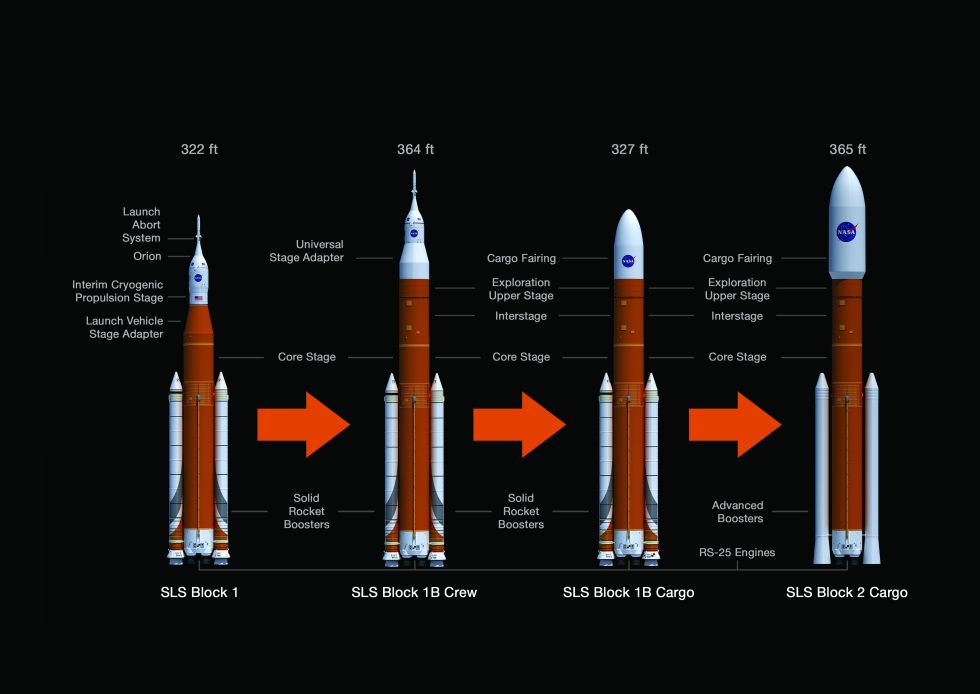-
A long-exposure view of the mobile launcher at NASA's Kennedy Space Center in Florida.NASA
-
A rendering of the SLS rocket attached to the mobile launcher.NASA
-
A view from below the mobile launcher shows a crane positioning the bracket for the Orion Service Module Umbilical.NASA
-
A sense of scale: In view, in the background at far left, is the Vehicle Assembly Building and the mobile launcher.NASA
-
During a training exercise, a NASA UH-1 "Huey" helicopter flies past the Mobile Launcher.NASA
-
OK, maybe the journey to the Moon begins here.NASA
-
A view of the mobile launcher taken from a deck on the north side of the nearby Vehicle Assembly Building on May 30, 2017.NASA
-
The mobile launcher is to the back, left of the iconic Vertical Assembly Building.NASA
-
Another one for scale: The Vehicle Assembly Building and mobile launcher are engulfed in fog.NASA
-
The Orion Service Module Umbilical is lifted for installation on the mobile launcher tower.NASA
In August 2010, NASA completed construction of a massive 355-foot tall mobile tower that was to be used to launch its Ares I rocket. It had cost the agency $234 million to build, according to NASA's inspector general. But there was just one problem—President Obama had canceled the Ares I rocket in February of that year.
Later, Congress would swoop in to reinstate NASA's rocket-building program by directing the agency to build the Space Launch System. But because this rocket is larger and more powerful than the Ares I vehicle, the mobile launch platform had to be modified to handle the additional weight and thrust. Initial estimates of this expense were $54 million, but the cost has risen substantially above that.
Now, seven years later, NASA is finalizing the upgrades to the mobile launcher that will be used for the maiden flight of the SLS rocket, likely no earlier than December 2019. However, there's another problem. Because the SLS's upper stage will be upgraded between this first flight and second flight (Exploration Mission-2, or EM-2), the larger and longer upper stage will necessitate significant changes to the mobile launcher.
Build another one?
At present, the agency estimates it will take 33 months to accomplish this work. "That is driven by the need to modify the existing mobile launcher systems and structure from SLS Block 1 to Block 1B, complete verification and validation, and to be ready for EM-2 stacking," an agency spokeswoman, Kathryn Hambleton, told Ars.
This is a rather long gap, however, which raises concerns about "launch readiness" of space agency employees. Last week during a meeting in Houston, NASA's Aerospace Safety Advisory Panel raised concerns about such a long break between the first and second flights of the SLS rocket and Orion spacecraft. The panel was in agreement about the need for a second mobile launcher, and it encouraged Congress to consider and fund such an initiative.
"That represents a pause in the program that we think could involve safety difficulties because the experience that’s being built up by people falls down, people have to relearn their jobs, et cetera, et cetera," said a member of the advisory board, engineer Donald McErlean. "We think it would be much more efficient for the continuation of the program if it were possible to construct a second mobile launcher and start that construction now."
Costs
According to Hambleton, NASA has made no decision on a second mobile launcher. She declined to address the question of costs. A 2012 report from NASA's inspector general estimated the costs of building a new mobile launcher then at $122 million, but a new structure expressly for the larger Block 1B rocket to be used for the second flight of the SLS rocket would almost certainly cost more.
Additionally, If NASA builds a new mobile launcher, the modified one now being configured for the first SLS flight would likely be used just once—a waste of infrastructure that cost perhaps half a billion dollars and more than a decade of development.
There is also the question of whether the "gap" between the first and second SLS flights is entirely due to mobile launcher modifications. At present, the agency is planning a crewed launch of the Orion spacecraft on the second flight, along with the power and propulsion system for a Deep Space Gateway in orbit near the Moon. This propulsion system has limited funding, however, and there is no guarantee it will be ready for flight in 2022 or 2023.
Finally, there is the potential for problems with an uncrewed Orion or the SLS rocket on its first flight. Problems with either system would likely necessitate delays between the first and second exploration missions regardless of the availability of a properly configured mobile launcher.
Listing image by NASA
reader comments
155